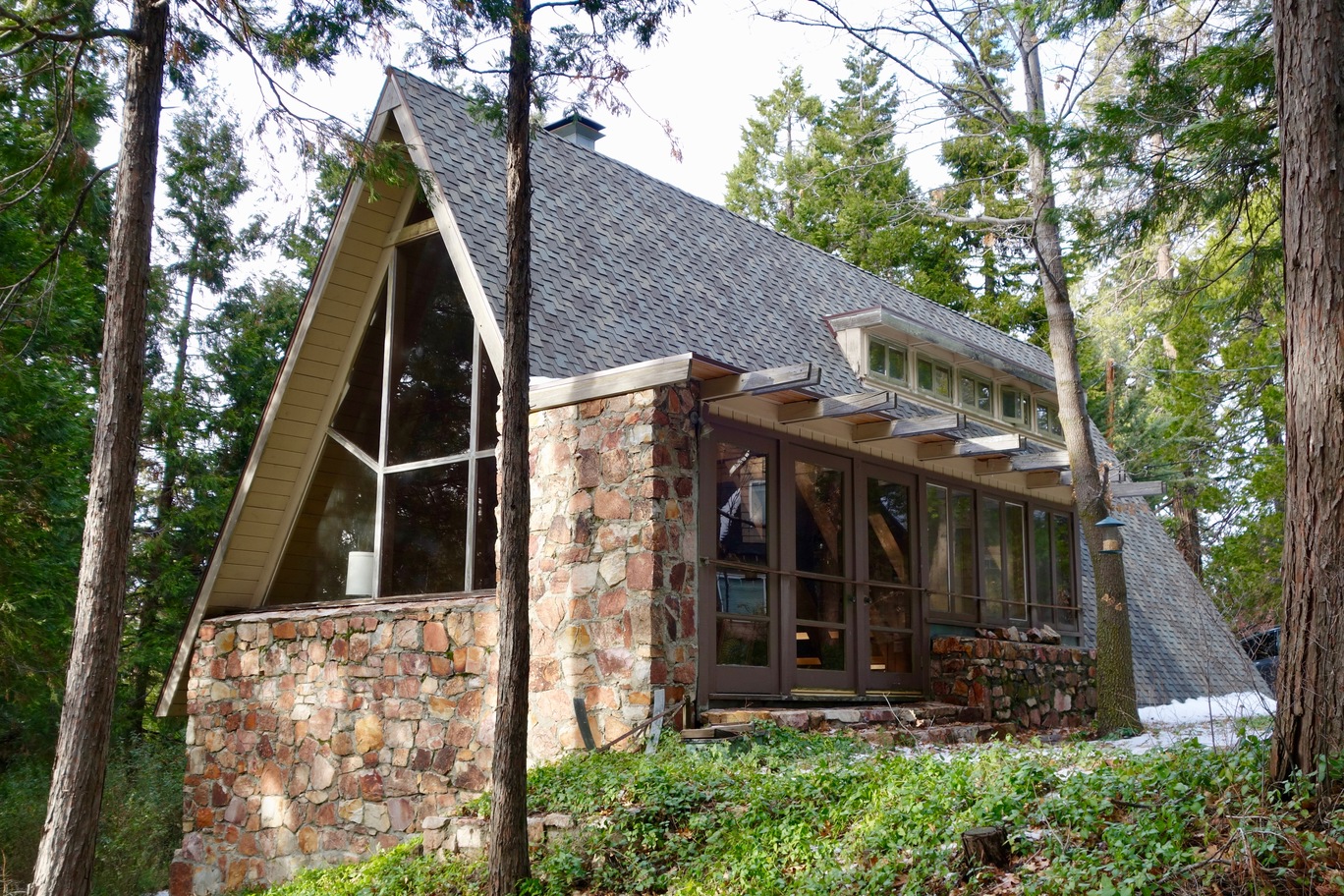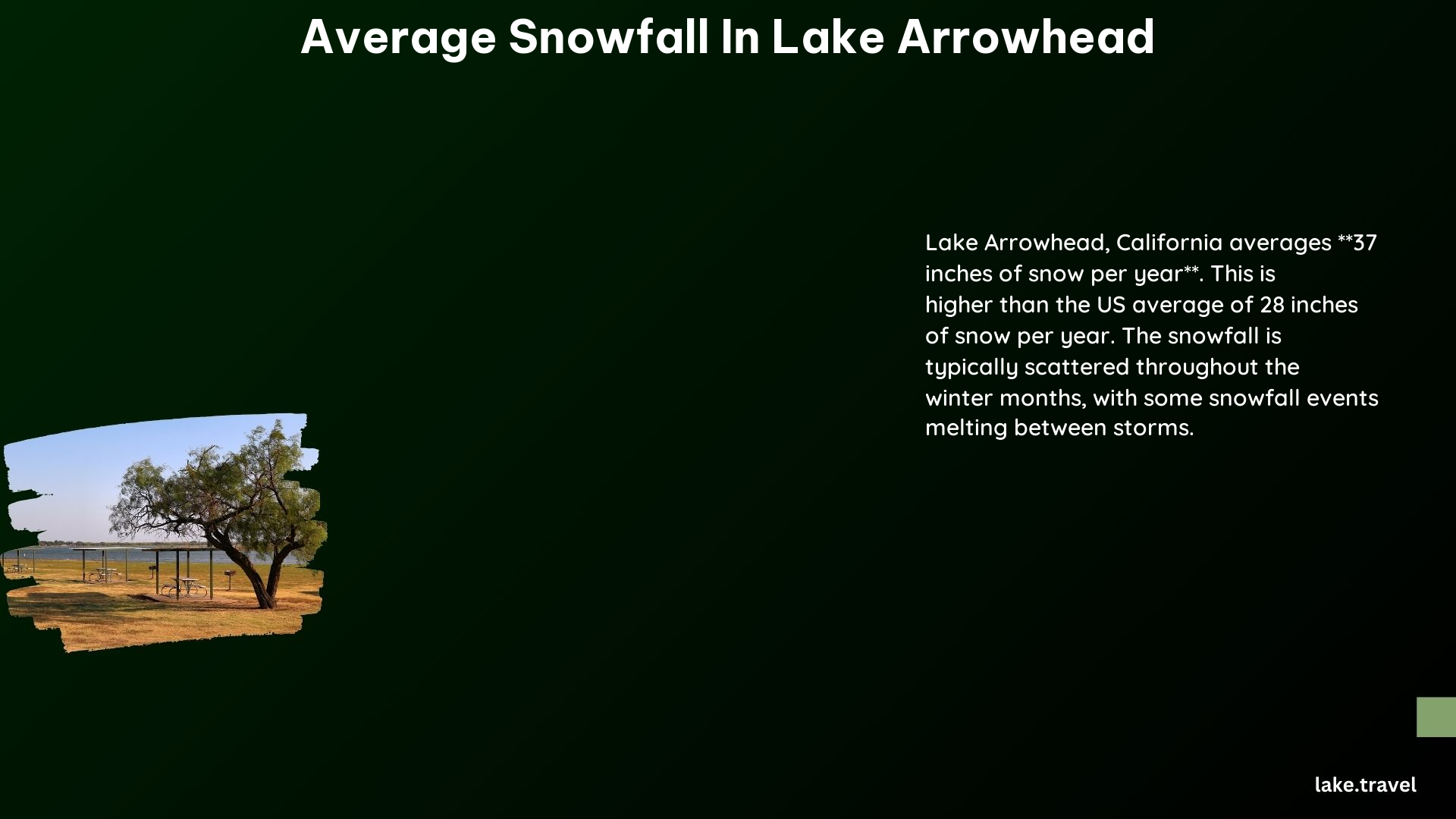Lake Arrowhead, a picturesque mountain resort in Southern California, experiences an average annual snowfall of 37 inches. This charming destination sees most of its snow between December and April, with March typically being the snowiest month. The area’s snowfall patterns have remained relatively consistent over recent decades, with some year-to-year variations influenced by factors such as elevation and broader climate patterns.
What is the Annual Average Snowfall in Lake Arrowhead?

Lake Arrowhead receives an average of 37 inches of snow per year, which is slightly above the US national average of 28 inches. This snowfall contributes significantly to the area’s winter charm and recreational activities. The consistency of snowfall over the past few decades has helped maintain Lake Arrowhead’s reputation as a winter wonderland in Southern California.
How Does Snowfall Vary by Month in Lake Arrowhead?

The snowfall in Lake Arrowhead follows a distinct seasonal pattern. Here’s a breakdown of the average monthly snowfall:
| Month | Average Snowfall |
|---|---|
| December | 2-3 inches |
| January | 4-5 inches |
| February | 4-5 inches |
| March | 6 inches |
| April | 1-2 inches |
March stands out as the snowiest month, while the winter season generally spans from December to April. This distribution of snowfall allows for a prolonged winter sports season and picturesque snowy landscapes throughout the colder months.
What Factors Influence Snowfall in Lake Arrowhead?
Several factors contribute to the snowfall patterns in Lake Arrowhead:
-
Elevation: Lake Arrowhead’s elevation of about 5,174 feet (1,577 meters) plays a crucial role in its snowfall. Higher elevations in the area, such as Running Springs and Green Valley Lake, typically receive more snow.
-
Climate Patterns: Broader climate phenomena like El Niño and La Niña can influence precipitation and snowfall in the region.
-
Temperature Fluctuations: The area’s temperature variations throughout the winter season affect whether precipitation falls as rain or snow.
-
Storm Systems: The frequency and intensity of winter storm systems passing through the area directly impact snowfall amounts.
How Does Lake Arrowhead’s Snowfall Compare to Nearby Areas?
Lake Arrowhead’s snowfall is notable, but it varies compared to nearby locations:
-
Running Springs: Located at a higher elevation, Running Springs typically receives more snow than Lake Arrowhead and retains snow cover for longer periods.
-
Green Valley Lake: This area, situated at an even higher elevation than Running Springs, experiences the most snowfall in the region.
-
Lower Elevation Areas: Communities at lower elevations in the San Bernardino Mountains generally receive less snow than Lake Arrowhead.
This variation creates a diverse winter landscape across the region, with Lake Arrowhead offering a balanced snow experience.
What are the Historical Snowfall Trends in Lake Arrowhead?
While specific records for extreme snowfall years are not readily available, some general trends can be observed:
- The period from 1991 to 2020 shows relatively consistent annual snowfall averages.
- There is no clear trend of significant increase or decrease in snowfall over recent decades.
- Year-to-year variations occur, likely influenced by broader climate patterns and local weather conditions.
How Does Snowfall Impact Lake Arrowhead’s Tourism and Recreation?
The consistent snowfall in Lake Arrowhead significantly contributes to its appeal as a winter destination:
- Winter Sports: The snow enables activities like skiing, snowboarding, and sledding at nearby resorts.
- Scenic Beauty: Snowy landscapes enhance the area’s natural beauty, attracting photographers and nature enthusiasts.
- Holiday Atmosphere: The snow creates a festive ambiance, particularly during the Christmas and New Year periods.
- Economic Impact: Winter tourism, driven by snowfall, provides a crucial economic boost to local businesses.
What Should Visitors Expect Regarding Snow in Lake Arrowhead?
Visitors planning a trip to Lake Arrowhead during the winter months can expect:
- The highest likelihood of snow from December through March.
- An average of 37 inches of snow spread across the winter season.
- Potentially more snow at higher elevation areas nearby.
- Intermittent snowfall, with periods of melting between storms.
- The need for winter driving preparedness, including chains for vehicles.
How Does Climate Change Affect Snowfall in Lake Arrowhead?
While the provided data doesn’t explicitly address climate change impacts, some considerations include:
- The consistency in snowfall over recent decades suggests no dramatic changes yet.
- Future climate projections may affect long-term snowfall patterns.
- Monitoring of snowfall trends will be crucial for understanding potential climate change impacts.
Lake Arrowhead’s average snowfall of 37 inches per year creates a winter wonderland that attracts visitors and supports local recreation. While snowfall can vary year to year, the area’s elevation and climate patterns contribute to its reliable winter snow cover, making it a popular destination for those seeking a snowy escape in Southern California.
References:
1. Reddit Discussion on Lake Arrowhead Weather
2. Western Regional Climate Center – Lake Arrowhead Data
3. Weather World – Lake Arrowhead Climate Data
